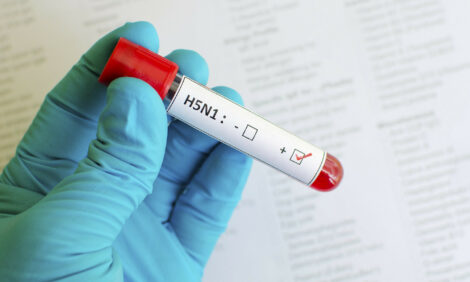



Plant Breeding Breakthroughs to Reduce Soy Imports
FRANCE - France ranks above average in being protein-independent for the feed sector among European Union (EU) Member States. While soybean meal consumption has remained relatively stable at 4 million metric tons (MT) annually over the past 25 years, use of rapeseed meal has increased from minor levels to more than 2 million MT annually, all domestically sourced as a by-product of France's biodiesel industry.Farmer unions have repeatedly called for increasing independence in protein feeds, but under the current policy conditions and with no major genetic breakthroughs for domestic soybean or pea production, France is expected to continue to be a major consumer and importer of soybean meal in the future.
As a major livestock, poultry and dairy producer in the European Union (EU), France consumes large quantities of feed. In fact, France is the EU's leading producer of compound feed with Germany and Spain, with 15 percent of the EU total production in each of these three Member States.
In 2010, France's compound feed production totaled 21.5 million MT. In 2011, preliminary estimates indicate that France's production of compound feed was marginally lower than in 2010.
In marketing year (MY) 2010/11, approximately 7 million MT of oilseed meals were consumed in France annually. They mainly consisted of soybean meal (4 million MT), followed by rapeseed meal (2.3 million MT), and sunflower meal (800,000 MT).
Main Drivers in Favor of Soybean Products Imports
Over the past decades, the oilseeds industry has repeatedly complained about France's dependence on imported products for protein-rich ingredients in animals feed. The high demand of the livestock, dairy, and poultry industries and the grains and soybean meal basic formulation of compound feed are not the only factors favoring high consumption of soybean meal.
In addition, the ban of meat and bone meals in animal feed in place since the bovine spongiform encephalopathy (BSE) crisis in 1996, and the limited domestic production of soybean products and substitutes are also major drivers in favor of soybean products imports.
The incorporation of grains has been favored by the Common Agricultural Policy (CAP) since its first reform in 1992, which pressured grain prices down. The use of grains in animal feed increased from 30 per cent in 1991 to 50 per cent currently. In addition, grain consumption in animal was been favored by the development of the swine and poultry industries in France, which are large consumers of grains.
Genetics and Plant Breeding would Significantly Increase in France's Production of Soybeans and Peas
According to the USDA report, pea varieties available for the farmers have not benefitted from the extensive research and plant breeding programs that grains and oilseeds have witnessed. As a result, the uncertainty in yields for peas remains high, currently, making farmers reluctant to grow these crops.
As a result, oilseeds and pulses farmer organisations, as well as Parliamentarians, called for intensifying varietal research on peas, both from the public (National Institute for Research in Agriculture - INRA), and the private sector (seed industry).
Although oilseeds and pulses farmer associations didn't call for having access to biotechnology in soybeans, several of their members as well as Parliamentarians denounced the inconsistency of the French and EU policy to approve imports but ban cultivation of biotech crops. Some Parliamentarians considered that they "won't be able to refuse innovation for a very long time."
There are many, among French farmers, who openly say they would be happy to grow biotech herbicide-tolerant soybeans if they were approved for cultivation in France. Some even go as far indicating the potential acreage of 300,000 ha of soybeans including herbicide tolerant varieties, which is twice as high as the target indicated by the oilseeds and pulses growers associations.
Further Reading
| - | You can view the full USDA report by clicking here. |
February 2012








